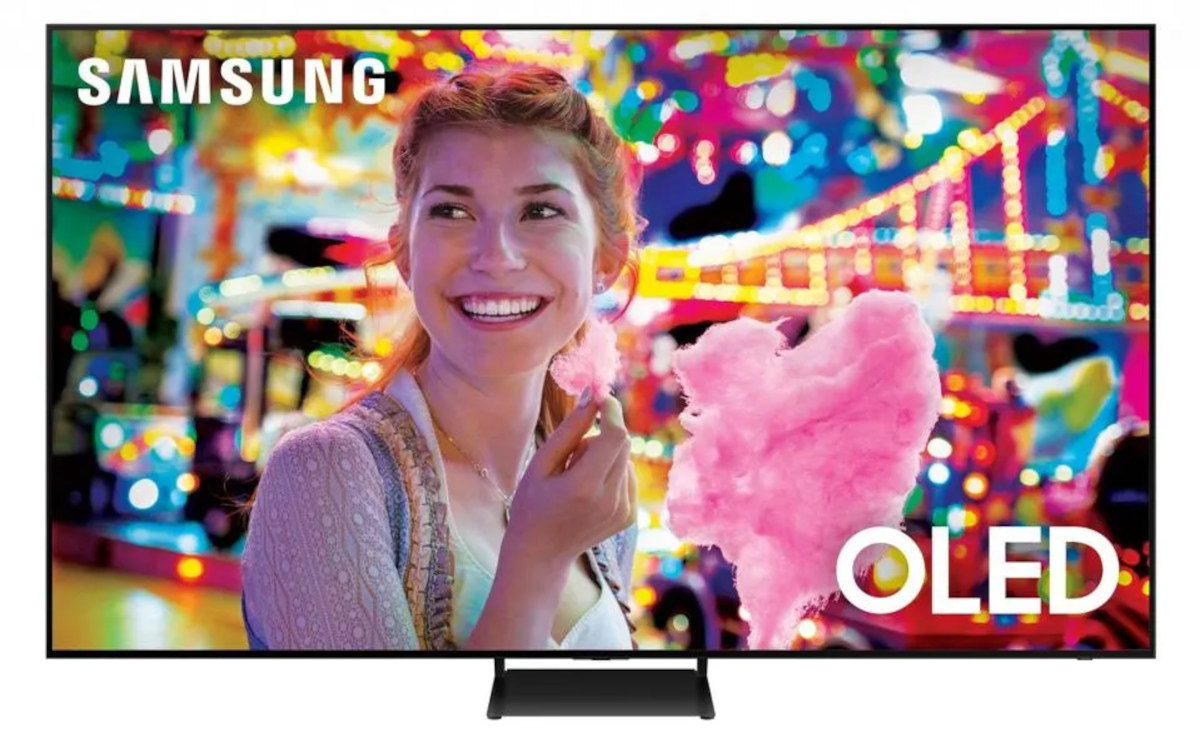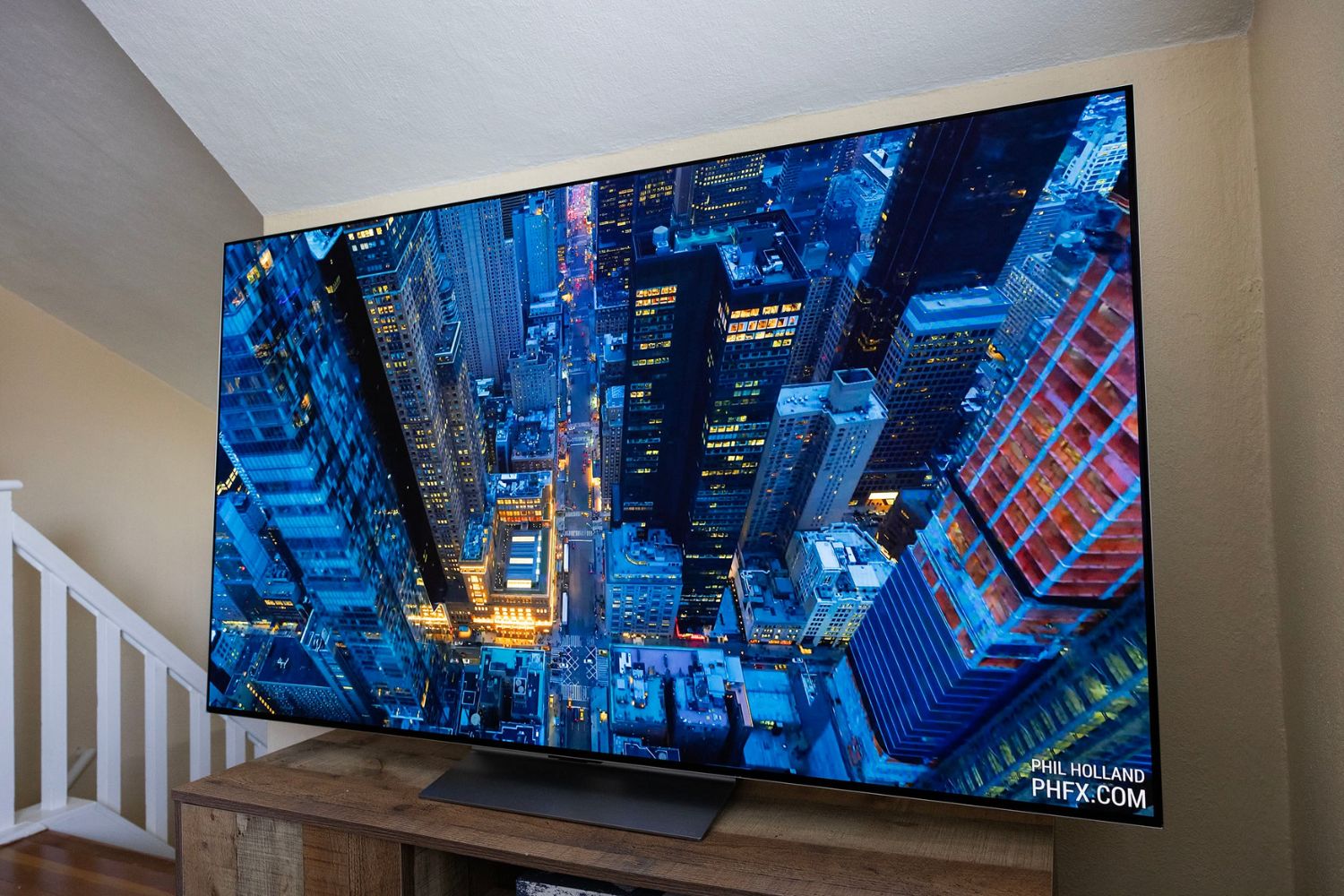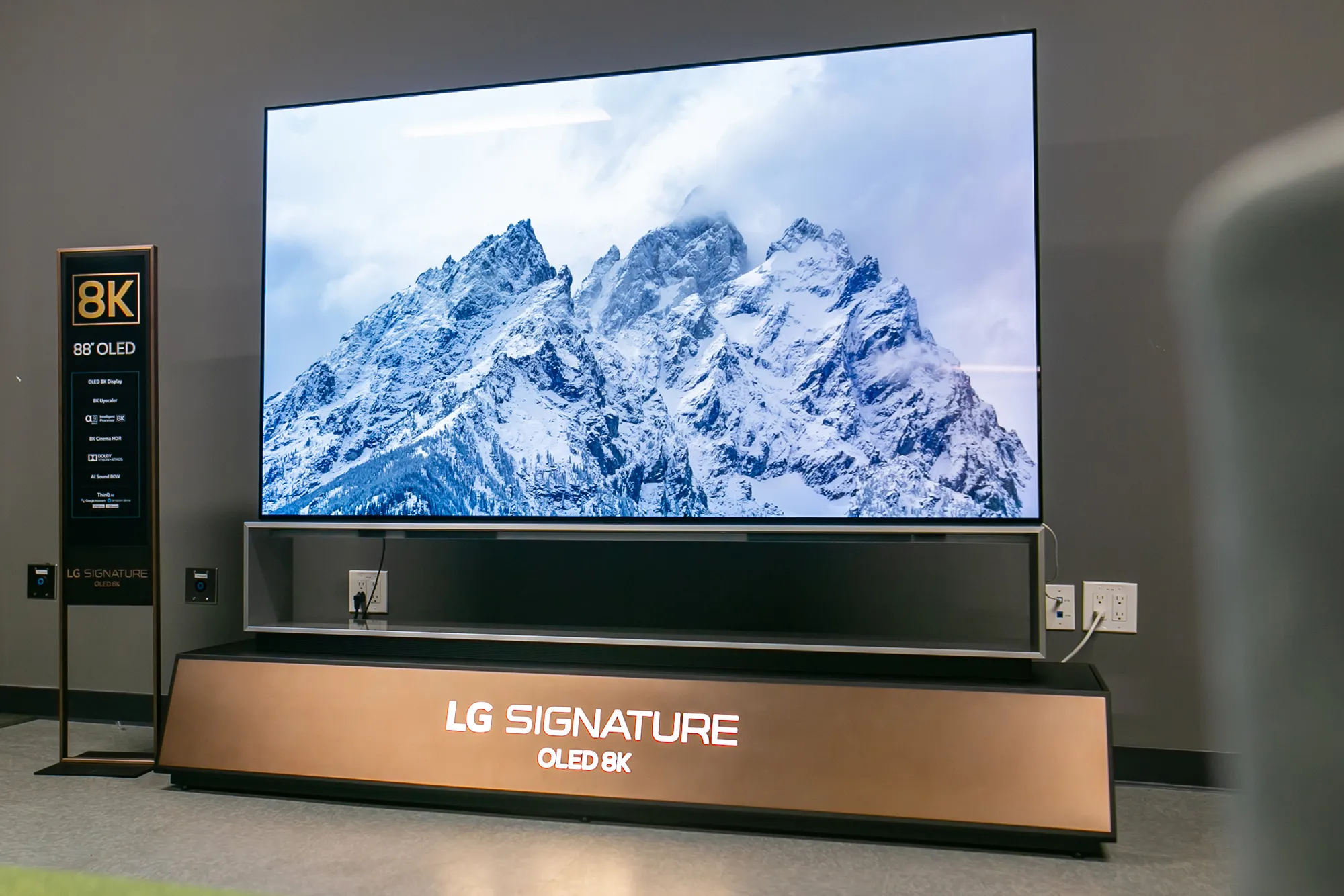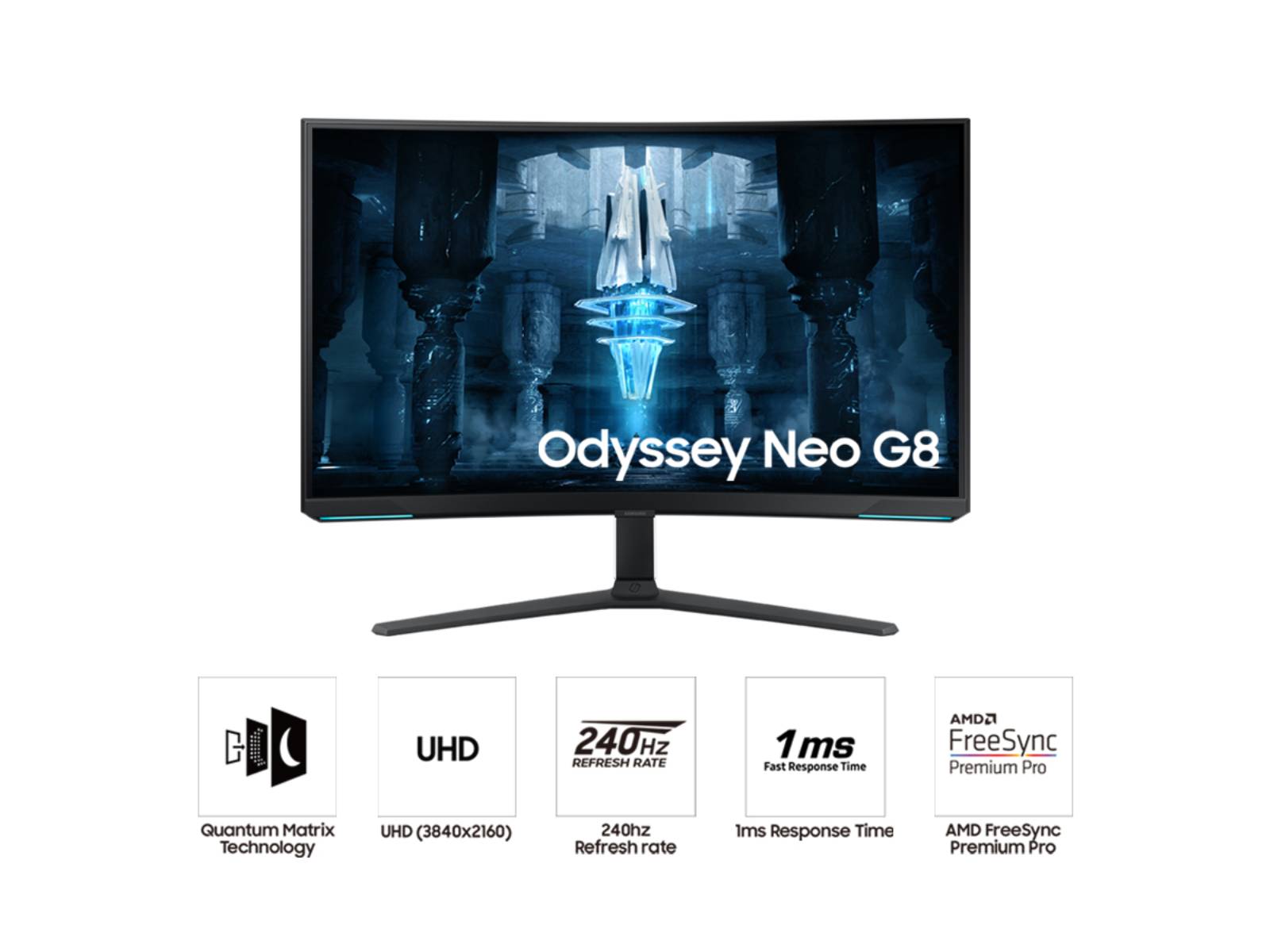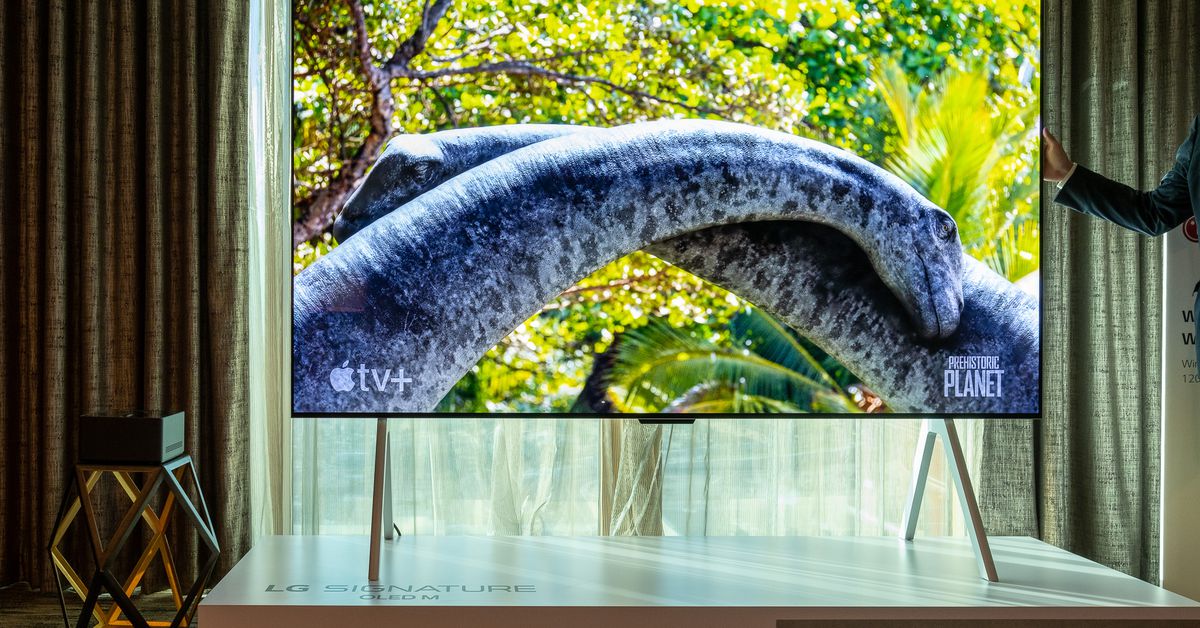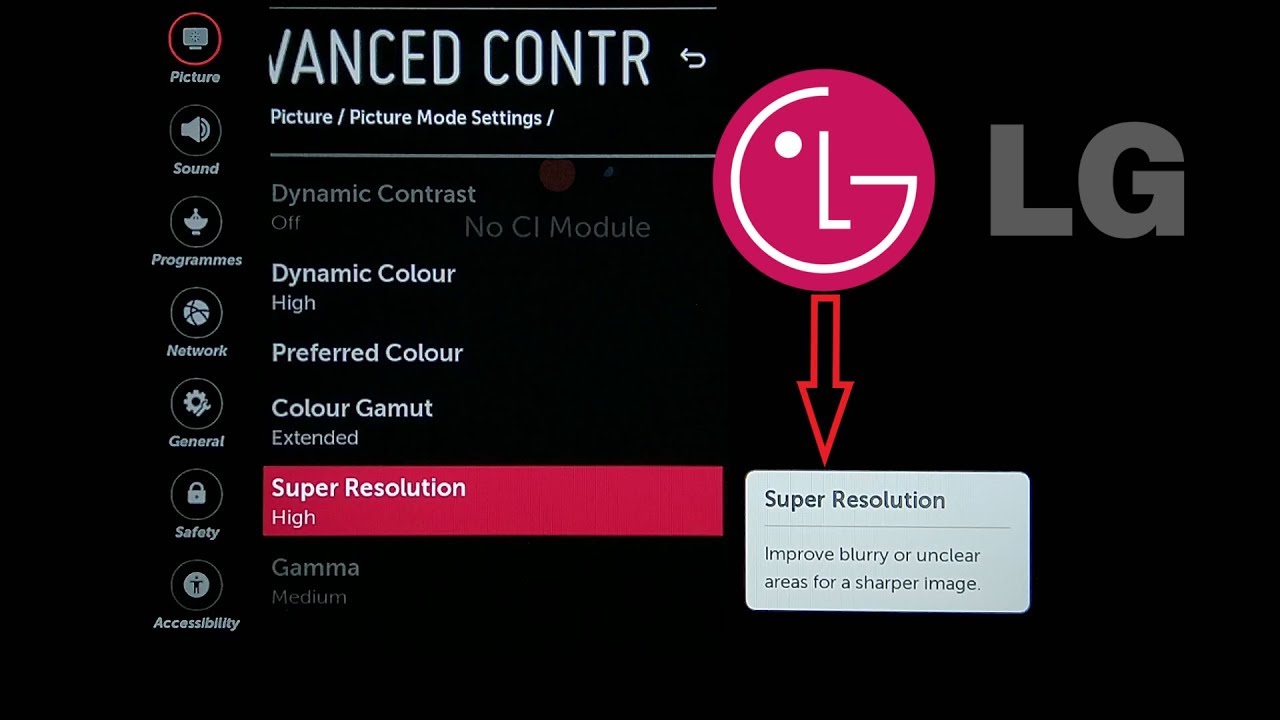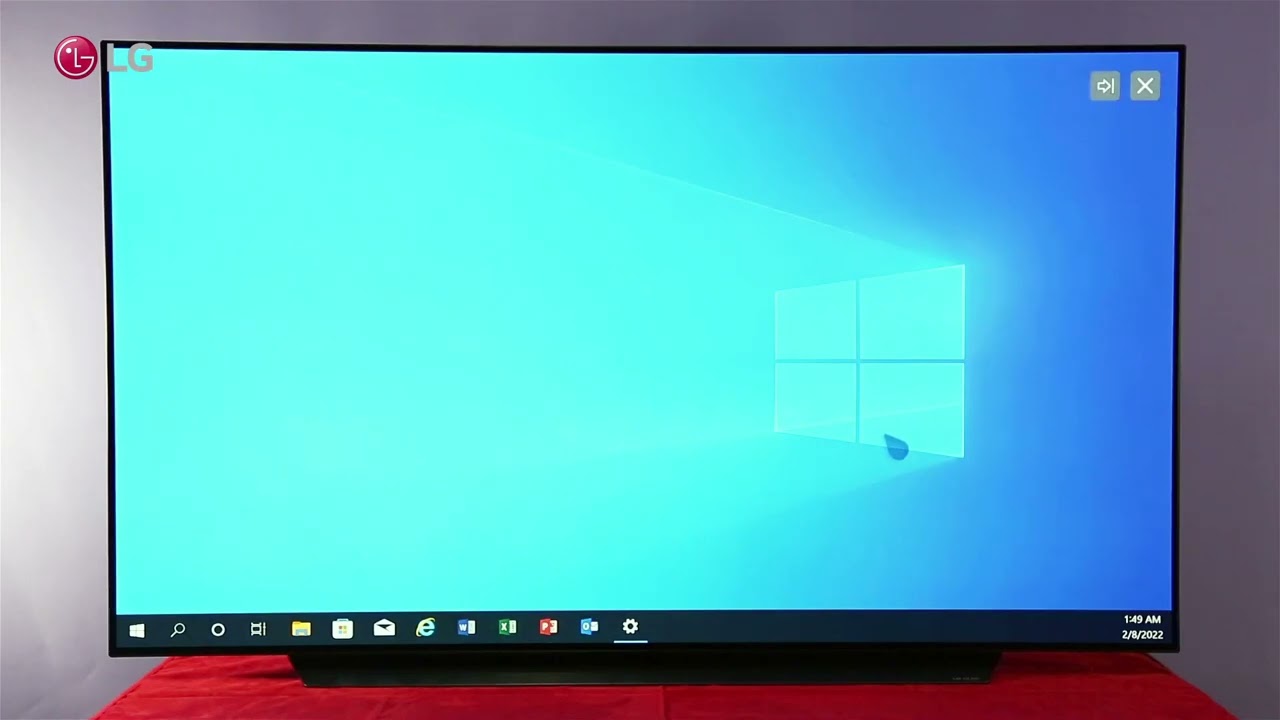What is OLED TV?
OLED, which stands for Organic Light-Emitting Diode, is a type of display technology that is revolutionizing the world of television. Unlike traditional LCD TVs that rely on a backlight to illuminate the pixels, OLED TVs use individually lit organic pixels, resulting in better contrast, deeper blacks, and vibrant colors.
OLED TVs offer several advantages over other display technologies. Firstly, they provide exceptional picture quality with superior color accuracy and wider viewing angles, ensuring that you get an immersive and lifelike visual experience from any angle in the room. Additionally, OLED panels can turn off individual pixels completely, resulting in pure black levels and infinite contrast ratios.
Furthermore, OLED TVs are incredibly thin and lightweight due to the absence of a backlight. This sleek design makes them perfect for wall mounting and enhances the aesthetic appeal of any room. Moreover, OLED technology allows for a faster response time, which is beneficial for gamers, reducing motion blur and ensuring smooth gameplay.
In recent years, OLED TVs have gained popularity and become more affordable, making them accessible to a wider range of consumers. Many renowned electronic manufacturers are now producing OLED TVs, offering a variety of sizes and features to suit different needs and budgets.
Whether you are a movie enthusiast, a sports fan, or a gamer, an OLED TV will elevate your entertainment experience to new heights. The stunning visuals and immersive display quality of OLED technology truly bring content to life, making you feel like you are a part of the action. With their incredible picture quality, sleek design, and advanced features, OLED TVs are undoubtedly the future of television technology.
Understanding Resolution
In the world of televisions, resolution refers to the number of pixels that make up the display. It is a crucial aspect to consider when purchasing a TV, as it directly impacts the clarity and sharpness of the images and videos you will be viewing.
Resolution is typically expressed as the number of horizontal pixels by the number of vertical pixels. For example, a resolution of 1920×1080, commonly known as Full HD or 1080p, indicates that the display consists of 1920 pixels horizontally and 1080 pixels vertically. The higher the resolution, the more pixels there are, resulting in a finer and more detailed image.
A higher resolution means more pixels are packed into the same screen size, providing a clearer and sharper image. This is especially important for larger TVs and when viewing content with intricate details, such as high-definition movies or video games.
It’s worth noting that the resolution of the content being viewed should ideally match the resolution of the TV for optimal viewing experience. While modern televisions can upscale lower resolution content, it may not retain the same level of clarity as native resolution content.
Understanding resolution is essential to make an informed decision when purchasing an OLED TV. OLED TVs come in various resolutions, allowing you to choose the one that best suits your needs and preferences. The most common resolutions available for OLED TVs include HD (High Definition), Full HD (1080p), 4K Ultra HD (2160p), and 8K Ultra HD (4320p).
By understanding the concept of resolution and considering factors such as screen size and viewing distance, you can select the appropriate resolution for your OLED TV. This will ensure that you can fully enjoy the stunning visuals and details that OLED technology has to offer.
What is Resolution?
Resolution refers to the number of pixels that a screen or display can display horizontally and vertically. It is a critical factor in determining the clarity and level of detail in images and videos. The higher the resolution, the more pixels are packed into the screen, resulting in a sharper and more detailed picture.
Resolution is typically denoted as the number of horizontal pixels followed by the number of vertical pixels. For example, a resolution of 1920×1080, commonly known as Full HD or 1080p, means that the display consists of 1920 pixels horizontally and 1080 pixels vertically. The total number of pixels, which is obtained by multiplying the horizontal and vertical values, is often used to compare different display resolutions.
Having a higher resolution display means that the screen can display more details and finer textures. This is particularly noticeable when watching high-definition content or playing video games with intricate graphics. On the other hand, lower resolution displays may appear less sharp and show less detail.
It’s important to note that the relationship between resolution and screen size is also significant. A higher resolution display on a larger screen will provide a clearer image because the pixels are spread out over a larger area. Conversely, a lower resolution display on a larger screen may result in pixelation and a loss of image quality.
When choosing a television, it’s essential to consider your viewing preferences, the content you’ll be watching, and the optimal viewing distance. Higher resolution TVs like 4K or 8K Ultra HD can provide breathtaking visuals and are ideal for large screens or close viewing distances. However, for smaller screens or typical viewing distances, a lower resolution like Full HD may still deliver a satisfactory viewing experience.
Understanding resolution is crucial when selecting the right TV for your needs. By considering factors such as screen size, viewing distance, and the type of content you enjoy, you can make an informed decision and ensure that you get the best visual experience possible.
Native Resolution of OLED TVs
The native resolution of an OLED TV refers to the specific resolution at which the display is designed to operate optimally. It is the resolution at which each individual pixel on the OLED panel functions at its best, providing the truest representation of the content being displayed.
Unlike other display technologies, OLED panels do not rely on a backlight and can individually control each pixel’s brightness and color. This allows OLED TVs to have a native resolution that matches the number of pixels on the display, resulting in stunning picture quality and exceptional detail.
Most OLED TVs available on the market today have a native resolution of either Full HD (1080p), 4K Ultra HD (2160p), or 8K Ultra HD (4320p). However, it’s important to note that OLED technology is highly versatile and can support various resolutions depending on the display size and brand.
When purchasing an OLED TV, it is recommended to choose a model that has a native resolution that aligns with your preferred viewing experience. If you primarily watch high-definition content or have a smaller screen size, a Full HD (1080p) OLED TV may suffice. However, if you want to immerse yourself in the highest level of detail and enjoy 4K or 8K content, then opting for an OLED TV with a native resolution of 4K or 8K Ultra HD is the way to go.
It’s worth mentioning that OLED TVs can handle lower resolution content as well. Modern OLED TVs are equipped with upscaling technology, which enhances the quality of lower resolution content by adding additional pixels and improving sharpness. However, it’s important to keep in mind that upscaling cannot match the same level of detail and clarity as content that is natively displayed at the TV’s resolution.
By understanding the native resolution of OLED TVs, you can choose the right TV that aligns with your viewing preferences and delivers the best visual experience. Whether you opt for Full HD, 4K, or 8K, an OLED TV will showcase breathtaking imagery and bring your favorite content to life.
Why is Resolution Important?
Resolution plays a crucial role in the overall viewing experience on a television. It determines the level of detail, clarity, and sharpness of the images and videos displayed on the screen. Here are some key reasons why resolution is essential when it comes to choosing a TV:
Image Quality: A higher resolution means more pixels are packed into the screen, resulting in a clearer and more detailed image. Each pixel contributes to the level of detail, making it easier to discern fine textures, intricate patterns, and small objects on the screen. Whether you’re watching a movie or playing video games, a higher resolution can significantly enhance the visual experience.
Screen Size: The resolution of a TV is closely tied to its screen size. As the size of the screen increases, a higher resolution becomes more important. With a higher resolution, such as 4K or 8K Ultra HD, the pixels are spread out over a larger area, reducing the chance of pixelation and creating a seamless and immersive viewing experience.
Future-Proofing: Investing in a TV with a higher resolution, such as 4K or 8K, ensures that you are prepared for future content and technological advancements. As more 4K and 8K content becomes available, having a TV that can display these formats natively will allow you to enjoy the content in its full glory without any compromise in quality.
Gaming Experience: Gaming enthusiasts can greatly benefit from a higher resolution display. Games are becoming more visually stunning, with intricate graphics and detailed environments. A higher resolution ensures that you can fully appreciate the level of detail and immerse yourself in the gaming world. Additionally, some consoles and PCs support higher resolutions, allowing you to take full advantage of their capabilities.
Viewing Distance: The distance between the TV and the viewer also influences the importance of resolution. If you sit closer to the TV, as is often the case with gaming or home theater setups, a higher resolution becomes more noticeable and impactful. It ensures that you can see the finer details without straining your eyes.
Overall, resolution is a fundamental aspect to consider when buying a TV. It directly affects the level of detail and clarity in the visuals, allowing you to fully appreciate the content you are watching. By selecting a TV with the appropriate resolution for your needs, you can enjoy a stunning visual experience and make the most out of your entertainment setup.
Different Resolutions Available for OLED TVs
OLED TVs come in various resolutions, offering consumers a range of options to choose from based on their viewing preferences and budget. Here are the most common resolutions available for OLED TVs:
HD (High Definition) Resolution: HD resolution, also known as 720p, consists of 1280×720 pixels. While it is considered lower resolution compared to Full HD or 4K, it still provides a decent viewing experience on smaller screens or when watching content from a reasonable distance. HD resolution is a cost-effective option for those on a budget or those who primarily watch standard-definition content.
Full HD (1080p) Resolution: Full HD resolution, also known as 1080p, consists of 1920×1080 pixels, providing a more detailed and sharper image compared to HD resolution. This resolution is often the minimum recommended for larger screen sizes or when watching high-definition content. Full HD provides a smooth and immersive viewing experience for most types of content.
4K Ultra HD (2160p) Resolution: 4K Ultra HD resolution, also known as 2160p, offers four times the number of pixels compared to Full HD resolution. With a resolution of 3840×2160, 4K delivers incredibly sharp and highly detailed images, ideal for larger screen sizes and close viewing distances. This resolution is particularly suitable for those who appreciate the utmost clarity and enjoy watching 4K content.
8K Ultra HD (4320p) Resolution: 8K Ultra HD resolution, also known as 4320p, is the latest advancement in TV resolution technology. With a resolution of 7680×4320 pixels, 8K offers an unprecedented level of detail, presenting even the smallest elements with stunning precision. 8K is suited for larger screen sizes and those who value the absolute pinnacle of image quality. However, it’s worth noting that 8K content availability is still limited, with 4K content being more prevalent.
When deciding on the resolution for an OLED TV, consider factors such as the screen size, the type of content you watch, and your budget. While higher resolutions provide exceptional picture quality, they may come at a higher cost. Therefore, it’s important to strike a balance between resolution and other features to ensure the best value for your money.
Ultimately, the resolution you choose should cater to your specific needs and preferences. Whether you opt for HD, Full HD, 4K Ultra HD, or even 8K Ultra HD, an OLED TV will offer exceptional visual quality and bring your favorite movies, shows, and games to life with stunning realism.
HD (High Definition) Resolution
HD (High Definition) resolution is a popular option for OLED TVs, offering a balance between cost, quality, and versatility. With a resolution of 1280×720 pixels, HD provides a significant improvement over standard-definition (SD) content, resulting in sharper and clearer images.
While HD resolution may not offer the same level of detail as Full HD or 4K, it still provides a satisfactory viewing experience, especially on smaller screens or when viewing from a reasonable distance. For screens up to 32 inches, the difference in perceived image quality between HD and higher resolutions may be minimal.
HD resolution is commonly used for broadcast television, cable/satellite programming, and streaming services that offer HD content. Many popular TV channels and streaming platforms provide a wide range of HD programming, allowing viewers to enjoy their favorite shows and movies with enhanced clarity and improved visual fidelity.
One advantage of HD resolution is its affordability. Compared to higher resolutions like Full HD or 4K, HD OLED TVs are typically more budget-friendly, making them an accessible option for those on a tighter budget or looking for a secondary TV for a small living space or bedroom.
Additionally, HD content is more widely available than 4K content, which means you can enjoy a vast library of movies, TV shows, and other digital media without compromising on quality. Many gaming consoles and devices also support HD resolution, allowing you to enjoy your favorite games in a crisp and detailed format.
However, it is important to note that as screen sizes increase or viewing distances decrease, the limitations of HD resolution become more noticeable. For larger TVs or closer viewing distances, a higher resolution like Full HD or 4K may provide a more immersive and visually stunning experience.
In summary, HD resolution is a viable choice for OLED TVs, offering an improved viewing experience over standard-definition content while remaining budget-friendly. It provides sharp and clear images for smaller screens and is widely supported by various content providers and gaming consoles. Consider your screen size, viewing distance, and preferences when deciding if HD resolution is the right choice for your OLED TV.
Full HD (1080p) Resolution
Full HD (1080p) resolution is a widely adopted and popular choice for OLED TVs. With a resolution of 1920×1080 pixels, Full HD provides a significant upgrade in image quality and detail compared to HD resolution. It delivers a crisp and sharp viewing experience, making it ideal for a wide range of content.
The higher pixel density of Full HD resolution ensures that images and videos are displayed with greater clarity and precision. Whether you’re watching movies, TV shows, or playing video games, Full HD resolution enhances the level of detail, allowing you to fully immerse yourself in the content.
Full HD OLED TVs are particularly suitable for screen sizes ranging from 32 inches to 55 inches, depending on the viewer’s preferred viewing distance. With displays of this size, the increased pixel density of Full HD resolution offers a noticeable improvement in image quality compared to lower resolutions.
A significant advantage of Full HD resolution is its compatibility with a wide range of content sources. Many TV channels, streaming platforms, Blu-ray discs, and gaming consoles offer Full HD content, ensuring a vast library of high-quality media to enjoy on your OLED TV.
Moreover, the affordability of Full HD OLED TVs makes them an attractive option for those looking for a balance between price and performance. Compared to higher resolutions like 4K or 8K, Full HD OLED TVs often come with a more budget-friendly price tag while still delivering a remarkable viewing experience.
It’s worth mentioning that when selecting a Full HD OLED TV, consider factors such as the screen size and the typical viewing distance. For larger screens or when sitting closer to the TV, a higher resolution like 4K may yield even sharper visuals. However, in most average-sized living rooms or bedrooms, Full HD resolution offers an immersive and enjoyable viewing experience.
To summarize, Full HD (1080p) resolution is a popular choice for OLED TVs, striking a balance between affordability and excellent image quality. It offers an enhancement in detail and visual clarity, making it suitable for a wide range of content. Consider screen size, viewing distance, and your preference for a remarkable viewing experience when selecting a Full HD OLED TV.
4K Ultra HD (2160p) Resolution
4K Ultra HD (2160p) resolution has become the gold standard for OLED TVs, offering an exceptional level of detail and clarity. With a resolution of 3840×2160 pixels, 4K provides four times the number of pixels compared to Full HD, resulting in an incredibly sharp and immersive viewing experience.
One of the primary advantages of 4K resolution is its ability to showcase finer details and textures that would otherwise be less apparent on lower resolutions. This level of detail becomes especially noticeable on larger screens or when sitting closer to the TV, enhancing the overall visual impact of movies, TV shows, and games.
4K Ultra HD OLED TVs excel in displaying content that is natively recorded or mastered in 4K resolution. Many streaming services, movie studios, and content creators are now offering a growing library of 4K content, allowing viewers to fully appreciate the stunning visuals and lifelike details.
Furthermore, 4K resolution provides additional versatility with its ability to upscale lower resolution content. Most 4K OLED TVs feature advanced upscaling technology, which enhances the quality of standard and high-definition content to near-4K levels. While not as precise as native 4K content, the upscaling process can significantly improve the visual quality of non-4K media.
For avid gamers, 4K Ultra HD resolution offers a more immersive and detailed gaming experience. Many gaming consoles and PCs support 4K output, allowing gamers to enjoy their favorite titles with enhanced graphics and increased clarity. The combination of OLED technology and 4K resolution ensures smooth gameplay, vibrant colors, and remarkable image quality.
It’s worth noting that 4K Ultra HD OLED TVs are available in various screen sizes, allowing consumers to choose the size that best suits their needs and viewing environment. However, it’s worth considering that for smaller screen sizes or when the viewer is sitting at a considerable distance, the difference between 4K and lower resolutions may be less noticeable.
Overall, 4K Ultra HD resolution is a game-changer for OLED TVs, delivering an astonishing level of visual fidelity and detail. Whether you’re watching 4K content or utilizing the upscaling capabilities, the combination of OLED technology and 4K resolution ensures a breathtaking and immersive viewing experience.
8K Ultra HD (4320p) Resolution
8K Ultra HD (4320p) resolution is the latest advancement in display technology, offering an unprecedented level of detail and clarity. With a resolution of 7680×4320 pixels, 8K provides a staggering four times the pixel count of 4K Ultra HD, resulting in an incredibly immersive and lifelike viewing experience on OLED TVs.
The higher pixel density of 8K resolution ensures that images and videos are displayed with unmatched precision and realism. The level of detail in 8K content is truly extraordinary, showcasing even the finest textures, subtle gradients, and individual elements with exceptional clarity and sharpness.
While 8K content availability is still limited compared to lower resolutions, many TV manufacturers and streaming platforms have begun to introduce 8K programming. This allows viewers to experience breathtaking visuals that fully utilize the capabilities of 8K Ultra HD OLED TVs.
One of the notable advantages of 8K resolution is its ability to provide an even more immersive viewing experience on larger screen sizes. The higher pixel density ensures that the display remains sharp and detailed, even when viewed up close. This makes 8K particularly appealing for those with home theaters or large living spaces where the TV is the center of attention.
8K resolution also offers advantages in terms of upscaling lower resolution content. With more pixels to work with, 8K OLED TVs can upscale standard-definition and high-definition content to near-8K levels, resulting in improved sharpness and detail. While upscaling can’t match native 8K content, it can significantly enhance the visual quality of non-8K media.
It’s worth noting that 8K Ultra HD OLED TVs are best suited for those who value the absolute pinnacle of image quality and have access to native 8K content. Given its higher resolution, it’s important to consider factors such as screen size and viewing distance to fully appreciate the benefits of 8K resolution.
While 8K Ultra HD resolution represents the cutting edge of display technology, it’s important to consider that the availability of 8K content is still evolving, and the range of compatible devices is growing. As such, it may be worth assessing your specific needs, viewing habits, and budget to determine if an 8K OLED TV is the right choice for you.
In summary, 8K Ultra HD OLED TVs with their breathtaking 4320p resolution offer an unparalleled level of detail, realism, and immersive viewing experience. While 8K content is still growing, the capabilities of 8K resolution ensure a stunning visual experience for those who seek the absolute best in image quality.
Factors to Consider when Choosing the Resolution of an OLED TV
When selecting the resolution of an OLED TV, several factors should be considered to ensure an optimal viewing experience. Here are some key factors to take into account:
Screen Size: The size of the TV screen is an important factor in determining the appropriate resolution. As the screen size increases, a higher resolution becomes more crucial to maintain image quality and detail. For larger screens, such as 65 inches or above, opting for a resolution like 4K or 8K will result in a more immersive and visually pleasing experience.
Viewing Distance: The distance between the viewer and the TV also affects the perception of resolution. For an ideal viewing experience, it’s recommended to sit at a distance that allows you to appreciate the details without straining your eyes. As a general rule, a closer viewing distance will benefit from higher resolutions, while a greater distance may not require the same level of detail.
Source of Content: Consider the type and quality of content you typically watch. If you mostly watch standard-definition or non-4K content, a lower resolution like Full HD may suffice. However, if you often enjoy high-definition or 4K content, investing in a TV with a higher resolution capable of displaying that content natively, such as 4K or 8K, will provide a more immersive and visually stunning experience.
Budget: The cost of OLED TVs varies depending on the resolution. Higher resolution OLED TVs, such as 4K and 8K, tend to come with a higher price tag compared to lower resolutions like HD or Full HD. It’s essential to find a balance between your desired resolution and your budget to ensure the best value for your investment.
Future-Proofing: Consider the longevity of your OLED TV. Higher resolution TVs, such as 4K or 8K, offer better future-proofing as more content becomes available in those resolutions. While 1080p content is still prevalent, investing in a higher resolution now can ensure that you are prepared for upcoming advances in content and technology.
By considering these factors, you can make an informed decision and choose the resolution that best suits your needs. Whether it’s HD, Full HD, 4K, or 8K, selecting the right resolution will enhance your viewing pleasure and ensure that you can fully appreciate the stunning visuals that OLED technology offers.
Conclusion
Choosing the right resolution for an OLED TV is an important decision that significantly impacts your viewing experience. Understanding the various resolutions available and considering factors such as screen size, viewing distance, content sources, budget, and future-proofing helps you make an informed choice.
OLED TVs offer incredible picture quality and vibrant colors, making every viewing session a visual delight. HD resolution provides a budget-friendly option with improved clarity and sharpness over standard-definition content. Full HD resolution brings even more detail and is ideal for smaller to medium-sized screens.
4K Ultra HD resolution delivers an exceptional level of detail, immersing you in a world of lifelike visuals and enhancing the gaming experience. If you crave the absolute pinnacle of image quality, 8K Ultra HD resolution offers unparalleled levels of detail and is best suited for larger screens or immersive viewing setups.
Consider your viewing habits, preferred content types, screen size, and viewing distance when making a decision. While higher resolutions provide enhanced visual experiences, they may come at a higher cost. Balancing your preferences and budget ensures the best possible value for your investment.
Be aware of the content sources you use and their compatibility with the selected resolution. Streaming platforms, gaming consoles, and other devices supporting higher resolutions allow you to fully enjoy the benefits of your OLED TV.
With OLED technology and your chosen resolution, you can transform the way you watch movies, shows, and play games. Crisp details, vibrant colors, and stunning visuals will elevate your entertainment experience to new levels of immersion.
Ultimately, selecting the resolution of an OLED TV is a personal decision that depends on your preferences and requirements. Whatever resolution you choose – HD, Full HD, 4K, or 8K – an OLED TV ensures breathtaking visuals and a truly captivating viewing experience. So, take your time, consider your needs, and immerse yourself in the mesmerizing world of OLED technology.







